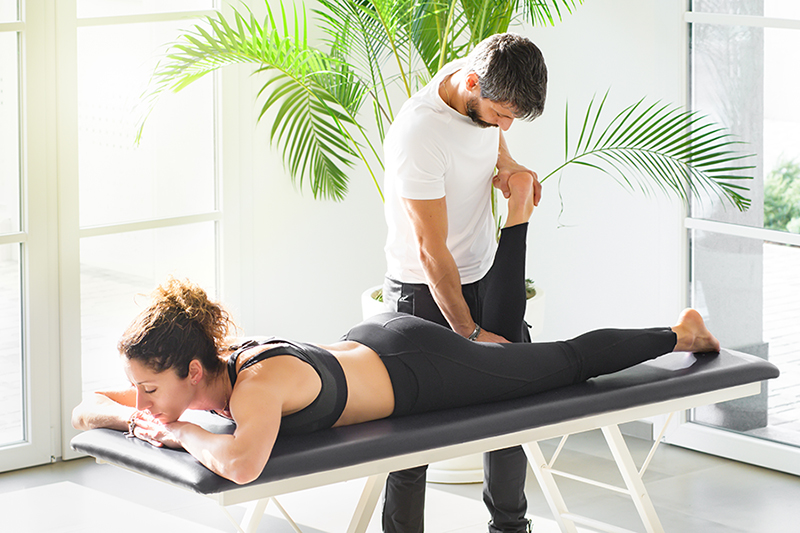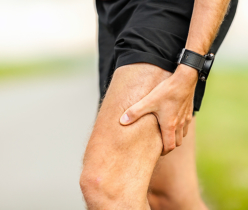After knee replacement surgery, it’s typical to have less knee pain than before your procedure. It will be easier to move around within a week or so. However, physical therapy (PT) will play a big role in this. Exercises such as walking and climbing stairs will also help aid in recovery.
Physical Therapy After Surgery
Most people find this shocking, however, you can start physical therapy the day after your knee replacement! This may be surprising, but it is true. A physical therapist comes to your recovery room to show you what to do. They will teach a safe way to perform beneficial exercises. Don’t worry, although you have stitches, the therapy is safe to perform.
PT is designed to help:
- Strengthen your leg
- Restore normal knee movement
- Walk with your new knee
Home or Rehab Clinic
Typically, you spend between 1 and 3 nights in the hospital after your knee replacement surgery. And depending on your health, you can go to a rehab clinic upon discharge. Here, you can get PT up to 6 days a week for about a month! Plus, you will get the support you need to get daily exercises complete.
On the other hand, you can also go straight home after you are discharged. At-home rehab can be successful when done right. You need to plan for between 4-6 weeks of therapy. This will be exercising a few times each week.
There are also outpatient rehab facilities. You can visit here each day to get help with your physical therapy exercises. It’s a good idea to work with your doctor to determine which option is best.
Home Care
There are important things to remember if you choose to go straight home, such as:
- Healing: You need to help your knee heal. Do not soak it until it is fully healed. Your doctor can tell you when it is okay to start showering.
- Eating: You may not have an appetite, but you still need to eat. Eat nutritious foods to help the healing process. You may also need an iron supplement and extra fiber. These can help reduce problems associated with medications.
- Moving: You will get a walking regimen upon being discharged. You will start indoors and go outdoors once you get stronger. Follow this daily. And don’t forget, you will have specific PT moves to perform every day too.
Your Exercise Schedule After a Knee Replacement
This plan will help your knee get stronger. Plan for 20 to 30 minutes at least twice a day. In some cases, you might need to work three times a day. A typical exercise plan will look something like this:
Day 1: A physical therapist will help you around your room in the hospital. You will practice putting weight on your knee. Also, you may use a walker to take a few steps. There will be bedside motions to try too. Tightening your thigh muscles is a common exercise. Holding for ten seconds and then releasing them. You can also strengthen your shin and calf. Moving your foot up and down at the ankle is great for this.
Day 2: You continue doing strengthening exercises. Bending and stretching the knee will start today. Your thighs need to be flexed and relaxed regularly. You may also be able to walk a little further today, using a walker if needed.
Days 3-5: You can still be in the hospital at this point, or a clinic, or home. You will be following your PT schedule. If feeling stronger, you may try climbing a few stairs.
After this and for the next few weeks, you can ramp up the exercises. Be sure to do this slowly and only do what you can handle. As your knee gets stronger, you can:
- Walk using only a cane
- Walk further distances with crutches or a walker
- Use an exercise bike (only pedal backward at first)
Your physical therapist will eventually introduce weights. This typically occurs after at least 4 weeks of rehab. The resistance helps to strengthen your knee and surrounding muscles. Whatever exercises you are given, be sure to stick with them for at least 2 months.
Return to Regular Living After Knee Replacement Surgery
Driving could be an option again after 3 weeks. For some, it may not be for up to 6 weeks. After 3 weeks, most people can go grocery shopping and easily get in and out of chairs. Things that were difficult before the surgery will be easier now. However, you will not be 100% free of pain. It will gradually decrease as you heal. Speak with your doctor about any persistent or severe pains.
A replacement knee can last for up to 15 years. Wear and tear will naturally occur, but some activities add extra stress. Running, skiing, playing tennis, and sports with jumping can cause quicker wear. But, you can still stay in shape with your new knee by walking, cycling, swimming, dancing, and golfing.
If you are searching for the right physical therapist, give us a call at 888-409-8006.




